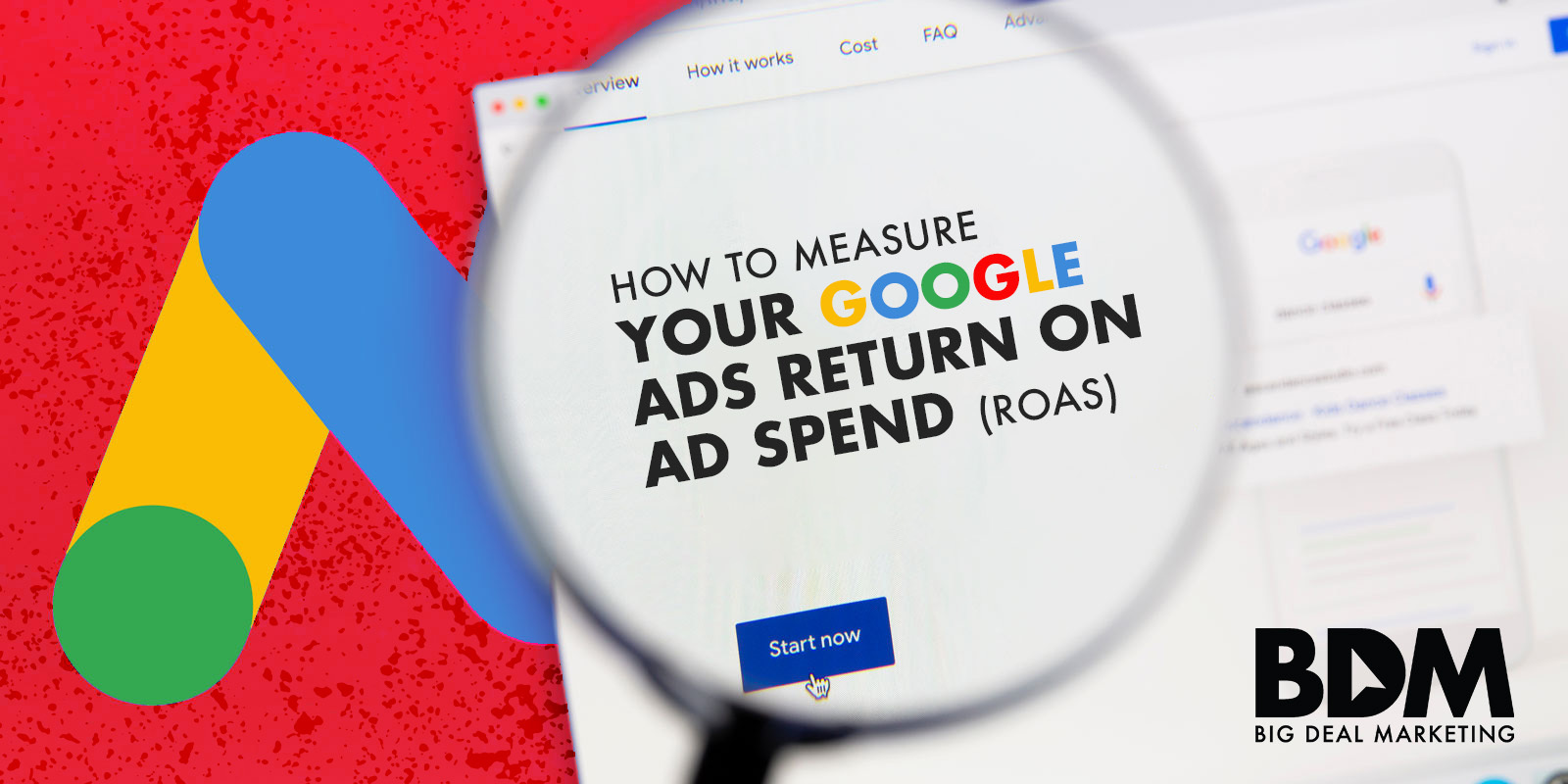When it comes to measuring the effectiveness of your Google Ads, few metrics are as valuable as Return on Ad Spend.
Return on Ad Spend, or ROAS, is an important marketing metric that measures the amount of revenue generated from your marketing campaign(s) for each dollar spent. You can measure Return on Ad Spend at the account, campaign, ad group, and/or ad level for your Google Ads.
This metric is valuable, as it determines if your marketing campaign(s) are profitable or not. It’s important to note that for this metric to be measured properly, your campaign(s) must be set up to track conversions.
What are conversions? Conversions are actions that are “counted” when someone interacts with your ad(s) and performs an action that you’ve determined as valuable to your business, such as calling your business, purchasing a product, requesting an estimate, etc.
How To Measure Return On Ad Spend

To measure your ROAS, use this formula:
Conversions x Average Win Rate x Average Sale Value – Google Ads Spend = ROAS
Alternatively, if you do not have the Average Win Rate or Average Sale Value at hand, you can use this formula to estimate your ROAS:
Revenue Generated From Ads / Google Ads Spend = ROAS
What’s A Good Return On Ad Spend?
On average, advertisers get nearly $3 in ROAS for every $1 spent on Google Ads*, or 300%. That means you can expect a 3:1 return for your investment.
However, it’s important to remember that even with a 2:1 return, your ads are still profitable. As long as you earn more than you spend, it’s a win!
*ROAS for other paid advertising platforms will vary.
Tips And Reminders
Lean into what works. If your ads are profitable and have an average or higher than average ROAS, consider increasing your spend to maximize its profitability.
ROAS is just a piece of the whole picture. ROAS is a valuable metric, but it’s important to keep in mind that there are many factors that help to determine the effectiveness of your ads, such as Cost Per Conversion, Clickthrough Rate, Cost Per Click, etc. In addition, not all ads are created to generate revenue. For example, if your campaign’s goal is to generate brand awareness, it is highly unlikely that it will generate a profit.
Don’t blindly apply Google Ads suggestions. You’re likely inundated with recommendations from Google Ad’s well-meaning AI and their ever-rotating account representatives. The best tip we can give you? Take their recommendations with a grain of salt. You’ll want to evaluate the merits of the recommendations based on your unique goals and data. Auto-applying these recommendations is a fast track to increasing your overall costs while decreasing your conversions and profitability.
Most importantly, remember this: profit = good. Your Google Ads campaign(s) performance will vary based on several factors. These can include seasonality, competition, demand, consumer behavior, etc. With this in mind, it’s crucial to remember that so long as your ROAS is at least 2:1, your ads are profitable!
Ready to take a closer look at what moves your business? Contact Big Deal Marketing today to request your FREE audit.


0 Comments